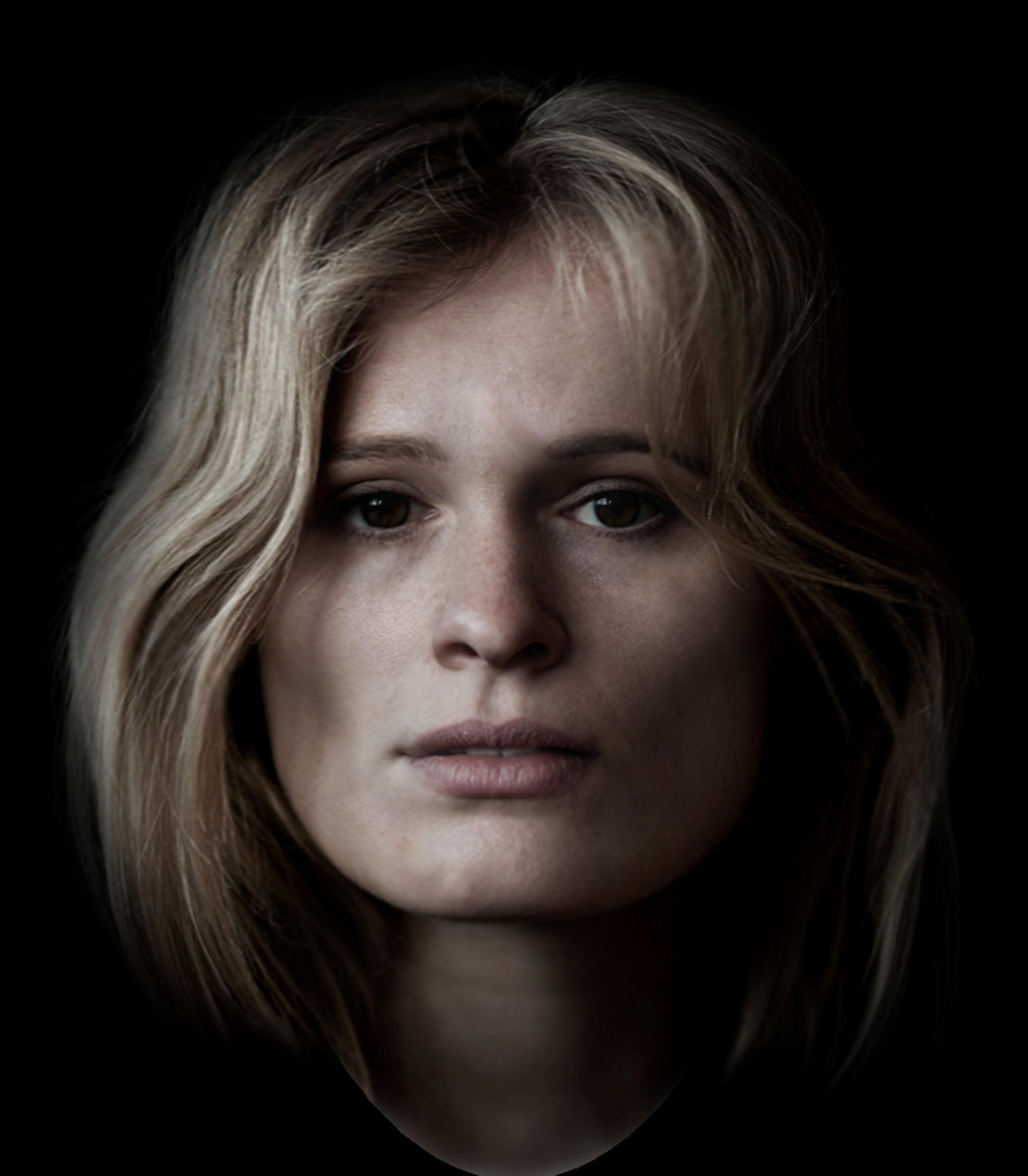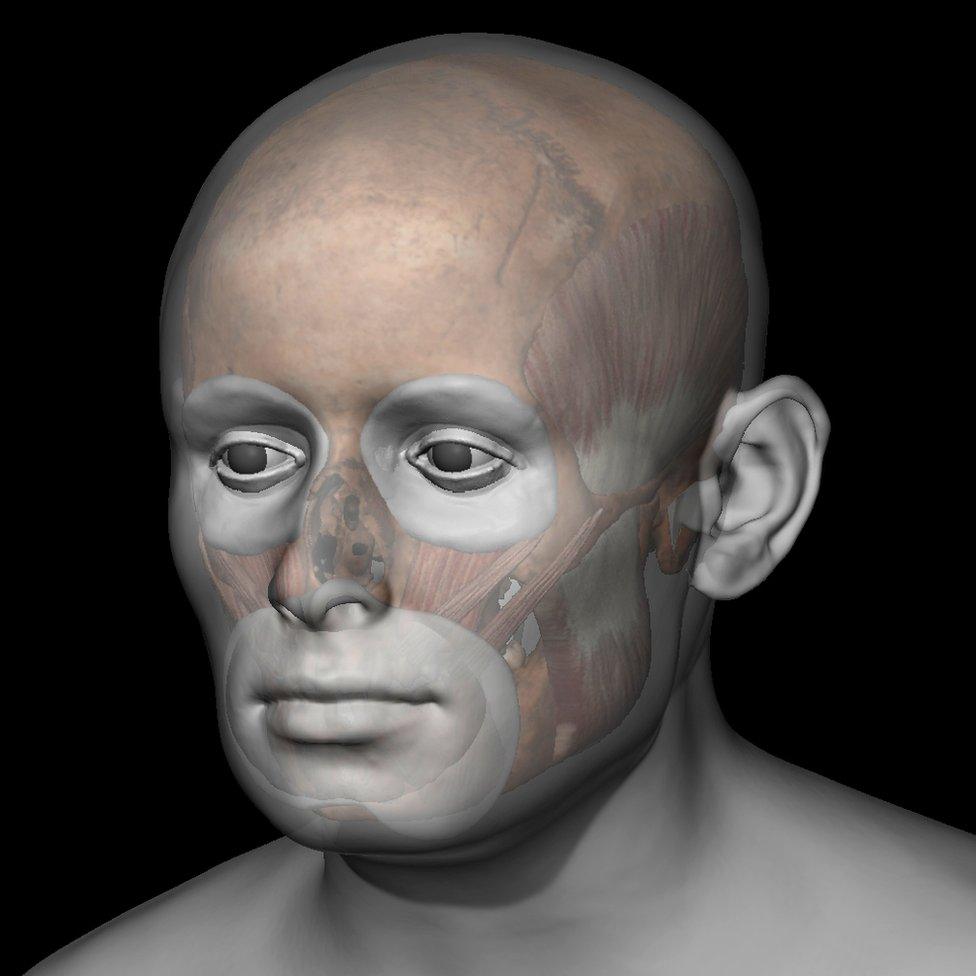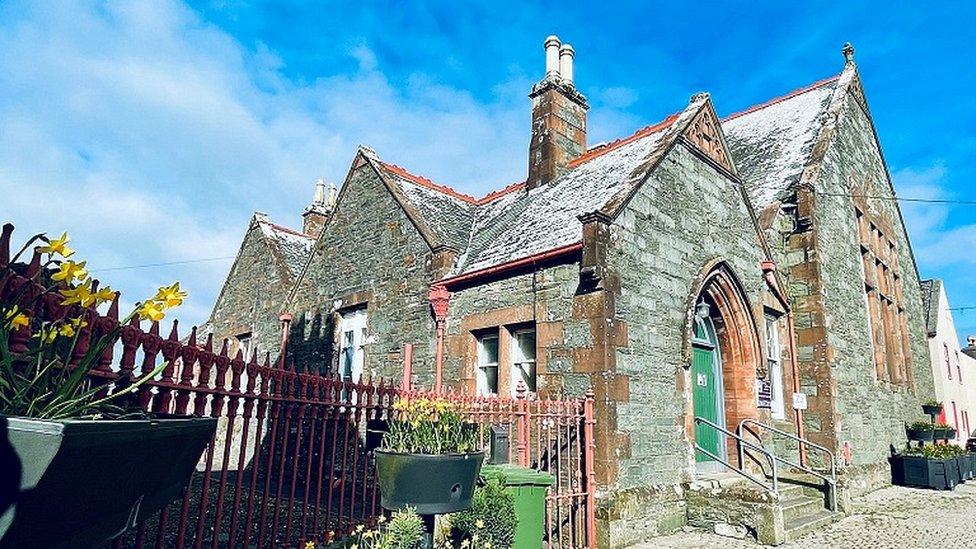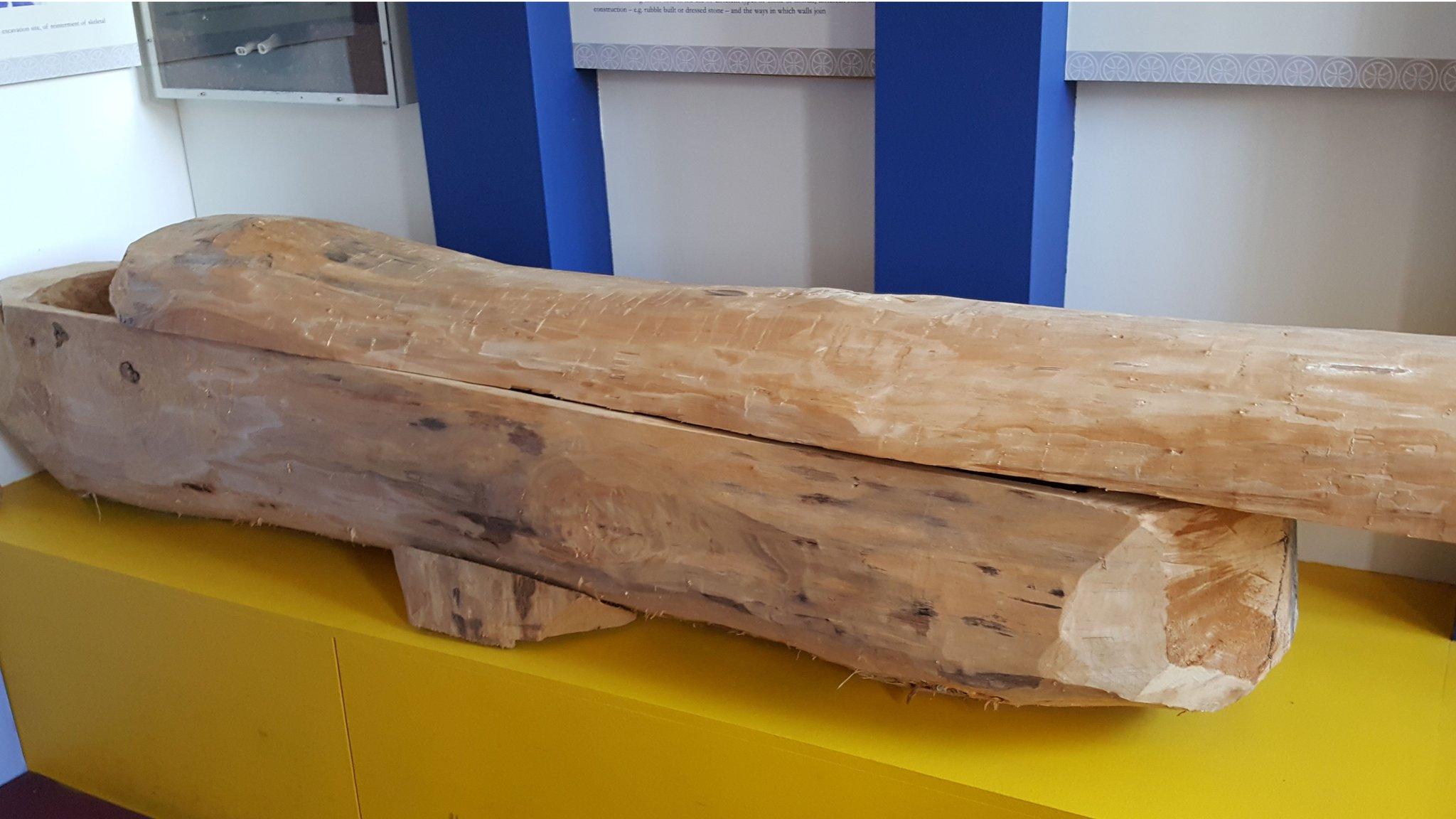Medieval woman's 3D animation tells Whithorn Priory's story
- Published

The face of a woman buried at Whithorn in the 14th Century has been digitally reconstructed
Talking 3D digital reconstructions of a 14th Century woman and a cleric with a cleft palate are helping to tell the story of a south of Scotland priory.
An event at Wigtown Book Festival will let people go face to face with the individuals buried at Whithorn.
The animations are part of Cold Case Whithorn - a project revisiting the area's archaeological archive.
They will be unveiled as part of the Bishops, Bones and Burials talk at Wigtown Book Festival on Friday.
The Whithorn Trust event brings together three of the experts working on the project at Whithorn.
Dr Adrian Maldonado of National Museums Scotland will be joined by cranio-facial anthropologist Dr Chris Rynn and Dr Kirsty Dingwall of Headland Archaeology.
All of them have been part of an initiative which has been able to reveal insights into the lifestyles, diets and health of people from Scotland's distant past.

Cold Case Whithorn has been revisiting the area's archaeological archives
Dr Maldonado said: "The famous excavations at Whithorn were a huge leap forward in the archaeology of Christianity and, amazingly, they continue to bring new insights into life in medieval Scotland.
"These graves were discovered decades ago, when they could not have anticipated the kinds of questions we can now ask.
"In addition to generating critical new scientific data about health and diet in the past, the people of medieval Whithorn continue to inspire stories.
"What could be a better testament to the value of curating archaeological collections in museums?"

The faces involved in the project have been recreated in a number of stages
National Museums Scotland and Dumfries and Galloway Council museums service loaned the skulls of three medieval people for 3D scanning by Dr Adrian Evans at University of Bradford.
They were then reconstructed digitally and given lifelike faces with voiceovers recorded to bring them to life.
The new 3D animations will now go on show at the Whithorn Trust visitor centre which tells the story of an area known as Scotland's "cradle of Christianity".
'Remarkable way'
Julia Muir Watt, the trust's development manager, said: "The chance to see and imagine that we can hear these three people from so many centuries ago is a remarkable way to help us understand our history and ancestry.
"It's always a challenge to imagine what life was really like in medieval times, and these reconstructions are a brilliant way to engage with who these people from our past really were, of their everyday lives, their hopes and their beliefs."
The Wigtown event will also see the launch of a series tales inspired by the woman and the unknown cleric as part of Scotland's Year of Stories 2022.
Related topics
- Published18 May 2021

- Published4 July 2020
